The Great Migration is one of the greatest spectacles in the world, with thousands of wildebeest migrating from Tanzania’s plains across Kenya’s Mara River each year.
The migration is epic in scale; around 1.5 million wildebeest, 400,000 zebras and 200,000 gazelles travel across the plains of East Africa during the months from July to October.
As it’s a once in a lifetime experience, it’s often difficult to choose between Kenya and Tanzania when it comes to where to witness this other-worldly event.
To help with the paradox of choice, our expert travel designers have pitted Kenya and Tanzania against one another, so you can choose the migration safari that best suits your needs.

Best time to visit for the Great Migration
Kenya
With Kenya being the go-to destination to catch a river crossing during migration, July to October is the best time to visit. During these months, herds of wildebeest tend to make their way from Tanzania’s Serengeti to Kenya’s Maasai Mara, so this is when you’ll have the best chance of seeing a river crossing. Once they reach Kenya’s plains, the wildebeest graze between different grasses and feed on the rich grass found here. After the grasses of the Maasai Mara have been depleted, the herds then make their way back south to the Serengeti and leave Kenya behind.
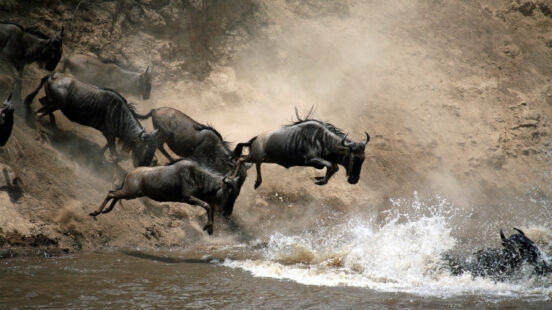
Tanzania
Tanzania has more options in terms of when to see the migration, although it’s advisable to avoid the rainy season that runs from April to May. After giving birth during the winter months, wildebeest tend to start travelling north towards Kenya through Tanzania’s Grumeti Reserve in June and July. From August to September, most of the herds will be in Kenya but they return to Tanzania from October onwards. The wildebeest follow the rain back into Tanzania from October to December, although it is hard to predict exactly where they’ll be as the weather is an unreliable force of nature.


Where to stay to see the Great Migration
Kenya
As Kenya is a popular safari destination, it can easily become overrun with crowds. For the most peaceful experience possible, we suggest staying in a private conservancy. Avoiding the hordes of tourists, private conservancies are great places to enjoy the local wildlife in a responsible and hassle-free way. Our expert travel designers have stayed in all of the private conservancies that the Maasai Mara has to offer, so they’ll be happy to advise on the best camp for your individual needs.
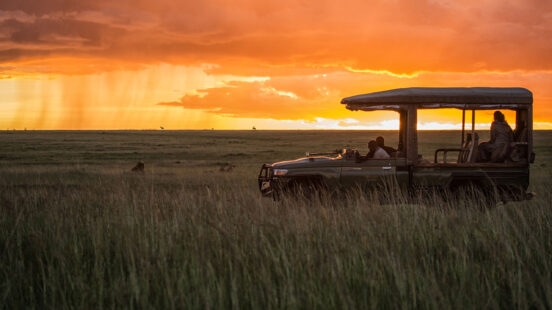
With the Maasai Mara’s conservancies bordering the park itself, travellers can combine an exclusive safari experience with beautiful, peaceful surroundings. As well as the opportunity to avoid crowds, private conservancies offer night drives and walking safaris, which aren’t allowed in national parks and game reserves due to their busy nature.

Tanzania
Due to the unpredictable nature of the migration in Tanzania, the key to experiencing it is combining staying in mobile camps and luxury lodges across two locations. Mobile camps are great options for those looking for the ultimate detox safari – a lack of WiFi and electricity forces you to disconnect with technology and spend some one-on-one time with nature.

These mobile camps base themselves wherever the herds happen to be, so they offer an unrivalled chance of viewing the migration. While these mobile camps excel in giving travellers the chance to see the migration, it’s a good idea to spend a portion of your trip in a luxury lodge in a different location, so that you can relax in style and double your chances of seeing the migration.
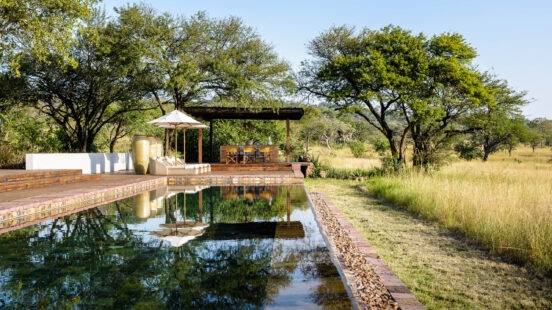

Things to do in Kenya and Tanzania
Kenya
With an endless list of things to do in Kenya, you don’t have to count on seeing the migration for an exhilarating trip. Kenya is an incredibly wildlife-rich nation, so it’s fairly easy to spot the Big Five no matter what time of year you go. Although the plains of the Maasai Mara are most commonly visited on migration safaris, there’s also plenty to fill the time when you’re not out chasing wildebeest. Hot air ballooning, horse riding, walking safaris, night drives and bush breakfasts are all excellent ways of spending time here.
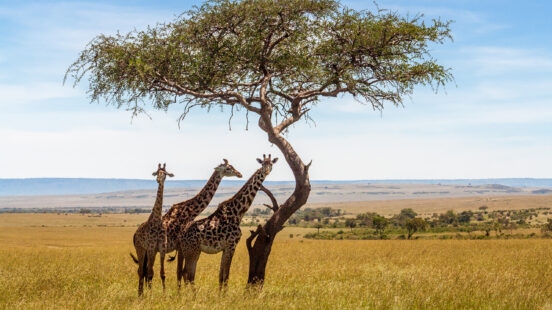
Away from the plains of the Maasai Mara, the diverse corners of Kenya all offer something a little different from one another. In Amboseli, adventurers can take on the mighty Mount Kilimanjaro whilst the eastern Chyulu Hills are a fantastic place to delve into Maasai culture. In the north, the northeastern Laikipia region is the go-to place to spot black rhinos, whilst the open bushland of the Samburu National Reserve is home to lions, leopards and cheetahs. Kenya is a country that caters to everyone, so your trip can be as action packed or as laid back as you’d like.
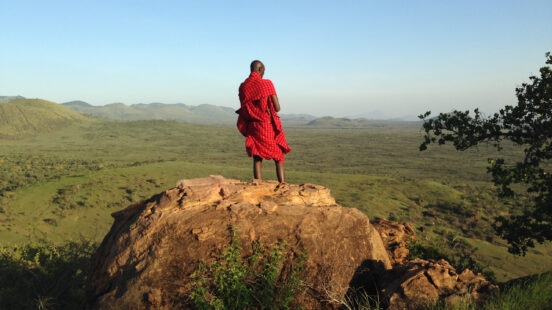
Tanzania
A vastly diverse country, Tanzania has much to offer travellers. While you’re there, combining your migration safari with other destinations allows you to fully experience all that this wonderful country has to offer. The Ngorongoro Crater, a huge volcanic crater that is an important conservation area, is a must see in Tanzania and just a stone’s throw from the Serengeti, so it’s easy to add on to the end of a migration safari. Other don’t-miss destinations in Tanzania include the flamingo filled Lake Manyara, Tarangire National Park for a walking elephant safari or Mount Kilimanjaro for a challenge.


Kenya vs Tanzania: where should I go?
While each country offers its own benefits to seeing the migration, the key difference is how busy the national parks tend to be. In Tanzania, the Serengeti is far less accessible than the Maasai Mara, so it’s not a great option for families but it caters to those looking to get off the beaten track well. In this isolated part of Africa, you could have a river crossing or migration sighting all to yourself, or share it with just one other vehicle.

While it’s not as secluded, Kenya offers a much higher chance of actually seeing the migration, due to the concentration of wildebeest in specific areas. It’s easier to predict where the wildebeest will be in Kenya, and the Maasai Mara is easily accessible, which makes it great for families. The Maasai Mara also houses every member of the Big Five, so if a variety of wildlife is what you want from your safari, Kenya takes the crown.
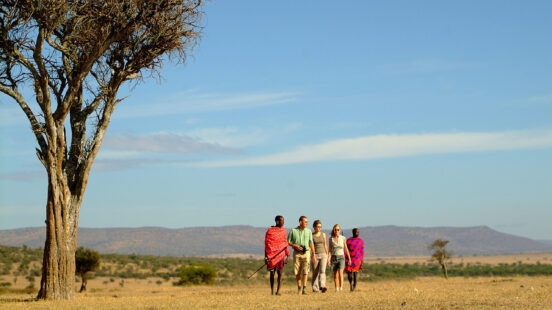
Begin your Great Migration adventure
Embark on the journey of a lifetime with a safari unlike any other. The spectacle of the Great Migration offers an unforgettable adventure through Kenya or Tanzania. Witness the diverse wildlife of the Maasai Mara and explore the serene expanses of the Serengeti.





